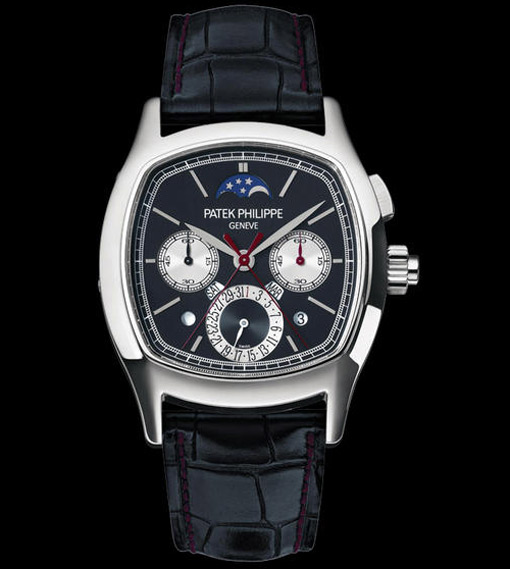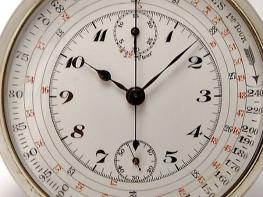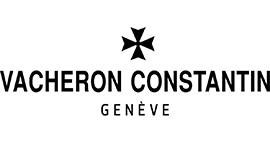The chronograph is plagued by a common tendency to describe its techniques, its frequency, its materials, but rarely its dial – almost as if a precision instrument had no right to be considered in artistic terms. This is a bad mistake, since the history of the chronograph cannot be summed up as merely a set of technical data. Its story is also told on its face, the dial. Yes, the chronograph is a watch just like any other – or at least almost so!
Chronograph or chronometer?
While this statement seems obvious today, that has not always been the case: the chronograph was not in fact immediately worn or referred to as such – despite the fact that the invention by Nicolas Rieussec in 1821 was aptly named, since the “chrono-graph” or “time-writing” instrument literally placed a drop of ink on the dial to provide a visual indication of the elapsed time.
These days, the chronometer is also very much front and centre on the watchmaking stage – but what’s the difference? A chronometer’s precision is guaranteed by independent certification, generally granted by the Swiss Official Chronometer Testing Institute (COSC). Other institutions, such as observatories, may also certify these models, providing the same test criteria are met.
The dial, an open book telling a tale of precision
The chronograph dial took shape in accordance with two constraints: its functions, and the space in which they were expressed. Thus, at a time when pocket watches and wristwatches had not yet made their appearance, large wooden cases made it possible to enjoy the luxury of assigning a separate dial to each function. When Louis Frédéric Perrelet was granted the split-second chronograph patent, the two measuring hands were dissociated and each appeared on its own dial!
The conditions in which chronographs were used gradually evolved, progressing from the grandstand of a racecourse to the busy practice of a medical doctor or judge’s courtroom. In other words, it became useful for men of action in practical situations and thus more widely available. The need to be carried around and indeed worn meant it had to leave the relative comfort of the wooden box and appear in a pocket chronograph format. Certain pioneers, such as Louis Moinet in 1816 (inventor of the chronograph), had anticipated this size half a century earlier. Nonetheless, these were at the time exceptional instruments reserved for members of an elite circle mainly composed of astronomers.
The advent of the pocket chronograph
Various industrialists such as Léon Breitling quickly stepped into the breach and the chronograph became an ideal travelling companion in all kinds of activities to which it was systematically adopted. Chronographs for motor races, horse races and cycle races thus begin to emerge, and the Robert brothers in Villeret specialised in these high-precision movements made be their company that later became known as Mercure and subsequently Minerva. A few kilometres above them in the Jura, a brand based in Saint-Imier made an indelible imprint on the destiny of chronograph making: Longines. All these models displayed the same round shape with two central hands sweeping over a white base. The chronograph’s aesthetic differentiation at the time stemmed from its scale or its case-back decoration.

An instrument for professionals
Above and beyond measuring these mostly sports-related activities, the chronograph also took on a professional purpose. Ball Watch got things started with its timepieces for railroad workers. Vacheron Constantin and Blancpain also produced several models intended for doctors, the famous “pulsometers” measuring their patients’ heart rate.

The face of the chronograph changed accordingly, since it no longer measured an elapsed time, but instead a frequency. This spurred the appearance of dial “bases” picking up those used on telemeters and later on tachometers. The military vocation of some chronographs even led to the development of dials bearing scales designed to facilitate reading ordnance survey maps. As they steadily became more accurate, chronographs were in turn enriched with 30-minute and 12-hour or even 24-hour subdial totalizers. While this ever-increasing sum of information was no problem within the broad space available on a pocket watch, the emergence of the wristwatch was to radically change the situation.
Wrist mechanism
The advent of the wrist chronograph in the 1930s meant taking a whole new turn: the dial design was no longer shaped by the function, but instead by the watch’s technical capacities. In other words, the movement dictated the aesthetic. The huge 13-ligne Valjoux 23 calibre typical of a period between World Wars in which discretion was the watchword, imposed the need for an XL dial proving just how strongly rooted the pocket-watch format still was at the time.
From the 1940s onwards, wristworn models entered the “complications” era. An Angelus calibre known as the ChronoDato and much sought-after among collectors is the finest embodiment of the association between a chronograph and a calendar. It was later followed by the Valjoux 88 complete with a moon-phase display.
One chronograph, two design schools
From then onwards, two aesthetic schools of thought were to face off: one dedicated to “pure” chronographs and another to chronographs complemented by various horological complications.
The former soon found expression through bi-compax or tri-compax models equipped with two or three counters, positioned at 3, 6 and 9 o’clock – a layout still used to this day.
Does that imply the design of a chronograph has remained unchanged for the past 70 years? Basically so, apart from the few exceptions represented by shaped timekeeping movements. Landeron was a keen purveyor of such calibres, which were notably fitted in certain Movado prototypes that are now extremely rare. Invicta also attempted this feat in the 1940s, and a twin-faced Reverso is the most contemporary example of this style.
Complication chronographs meanwhile forged their own distinctive aesthetic, given the need to concentrate more information into the same space. The calendar chronograph is the most frequent type and Zenith for example developed its Espada soon after the introduction of its El Primero calibre, by adding this calendar. Angelus later changed things up by offering the first digital date added to the chronograph with its ChronoDatoLuxe, followed by A. Lange & Söhne with its Datograph. Perpetual calendar chronographs later become the hallmark of Patek Philippe, which has recently reaffirmed its expertise in the field with its Reference 5951 model launched in 2014.

Should we expect to see the emergence of a new era in which the dial of the mechanical chronograph will be complemented by electronic indications? The hybrid watch with a mechanical heart and a quartz movement already exists, albeit generally for professional usage. Smartwatches have now also arrived on the scene, and may well give a whole new face to the chronograph dial.










